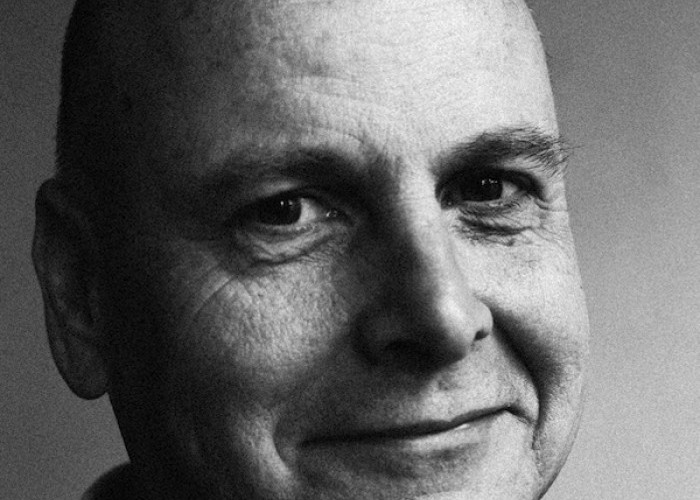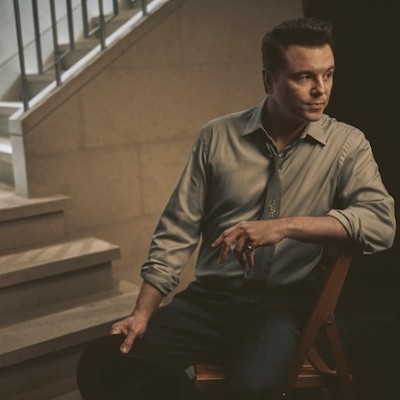Dec 9, 2025 12:28 PM
In Memoriam: Gordon Goodwin, 1954–2025
Gordon Goodwin, an award-winning saxophonist, pianist, bandleader, composer and arranger, died Dec. 8 in Los Angeles.…

Kevin Whitehead recently published Play the Way You Feel: The Essential Guide to Jazz Stories on Film.
(Photo: Francesca Patella/Courtesy Oxford University Press)In 1991, a panel of jazz musicians faced an audience of fans eager with questions. One fan cited a cluster of movies—Lady Sings The Blues (1972), ’Round Midnight (1986) and Bird (1988)—noting that it was good to see jazz receiving deserved recognition. Most agreed. But multi-instrumentalist Benny Carter politely dissented, suggesting that Hollywood was selling the idea of the jazz world as nothing but addicts and psychotics. “That’s not the kind of recognition I welcome.”
Jazz critic Kevin Whitehead’s Play the Way You Feel: The Essential Guide to Jazz Stories on Film (Oxford University Press) confirms Carter’s indictment. Yet, it spins a unique history of the evolving ways that motion pictures have helped shape the perception of jazz. Because there have been relatively few films about jazz—only about 70 by Whitehead’s count, from The Jazz Singer (1927) to Bolden (2019)—they’ve held sway.
Whitehead focuses here on movies about jazz, not featuring it. Soundies, documentaries and most shorts and cartoons are covered in two earlier guides, David Meeker’s Jazz in the Movies and Scott Yanow’s Jazz on Film.
The earliest jazz films were shorts of artists like Bessie Smith and Duke Ellington. But with the breakthrough of swing in 1936, jazz went big time, and Hollywood beckoned with a series of well-intentioned but fictionalized movies on the music. Made in the Jim Crow era, theses films had to make white audiences identify with the music’s “tainted” Black origins. Since African American protagonists could not be trusted with this task, filmmakers created charming white heroes to confer acceptance upon jazz and argue its cause on behalf of its originators.
Themes of modernity and authenticity addressed more subtle but sanitized subtexts of class, race and cultural appropriation. Today, these movies are viewed as period pieces inside period pieces. And “all period pieces,” Whitehead astutely notes, “are about when they’re made as much about when they’re set.”
After the demise of the big bands, jazz lost its commercial allure. So, Hollywood began to probe its more sensational sides. Tragedy replaced modernity, pinning the scarlet letter of addiction on jazz for decades.
This 400-page volume is actually too brief an overview of the complex dialog between jazz and cinema. Whitehead’s analysis is always lively, and mostly generous toward a topic he thoroughly loves. He points out what films got right and what they got wrong. There are countless connections and cross-references, but each chapter is a freestanding essay, making this book easy to cherry-pick and wander around in. DB
This story originally was published in the December 2020 issue of DownBeat. Subscribe here.

Goodwin was one of the most acclaimed, successful and influential jazz musicians of his generation.
Dec 9, 2025 12:28 PM
Gordon Goodwin, an award-winning saxophonist, pianist, bandleader, composer and arranger, died Dec. 8 in Los Angeles.…

Flea has returned to his first instrument — the trumpet — and assembled a dream band of jazz musicians to record a new album.
Dec 2, 2025 2:01 AM
After a nearly five-decade career as one of his generation’s defining rock bassists, Flea has returned to his first…

“It’s a pleasure and an honor to interpret the music of Oscar Peterson in his native city,” said Jim Doxas in regard to celebrating the Canadian legend. “He traveled the world, but never forgot Montreal.”
Nov 18, 2025 12:16 PM
In the pantheon of jazz luminaries, few shine as brightly, or swing as hard, as Oscar Peterson. A century ago, a…

Dec 11, 2025 11:00 AM
DownBeat presents a complete list of the 4-, 4½- and 5-star albums from 2025 in one convenient package. It’s a great…

Seth MacFarlane takes a turn from his television and film career to sing arrangements made for Frank Sinatra, but never recorded.
Nov 18, 2025 12:04 PM
“I’m not gonna lie to you — I don’t know why I thought this was about The Naked Gun, but I’m happy it’s…